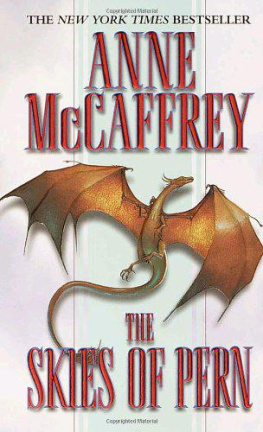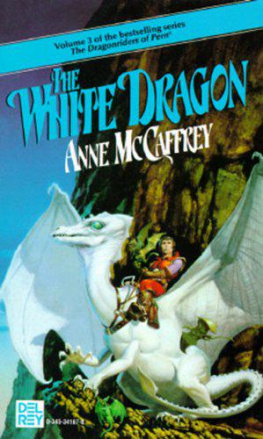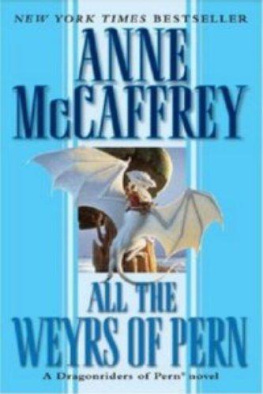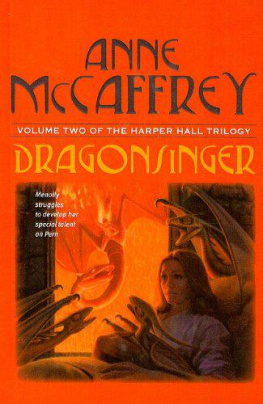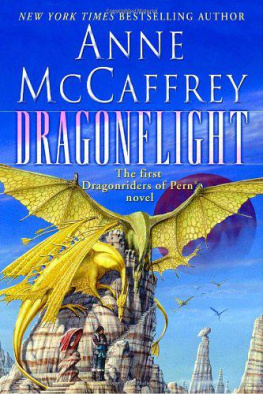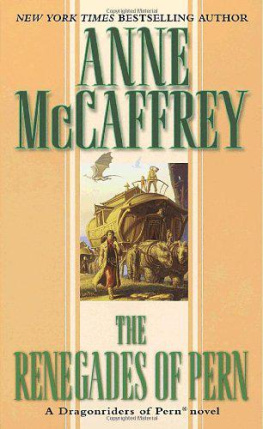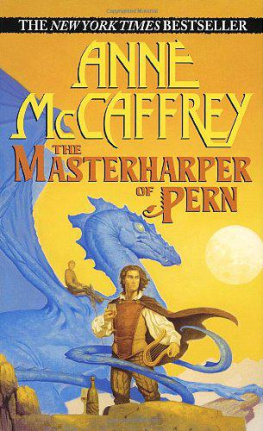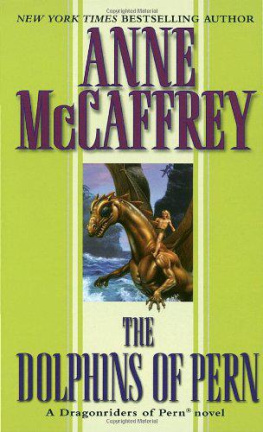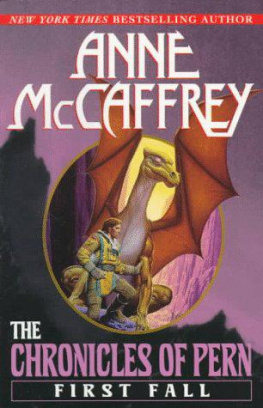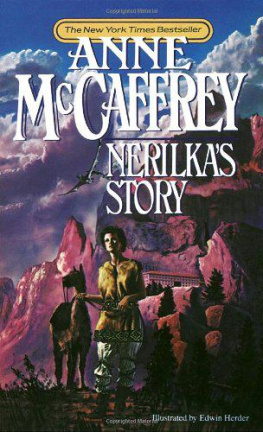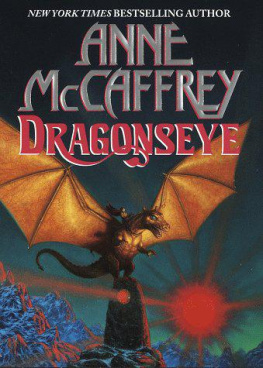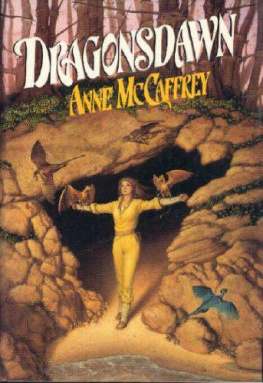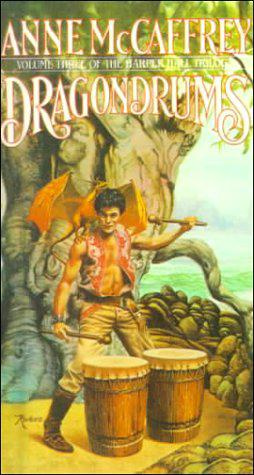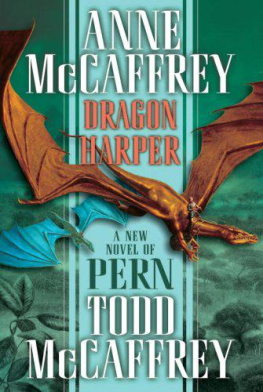Anne McCaffrey - Dragonquest
Here you can read online Anne McCaffrey - Dragonquest full text of the book (entire story) in english for free. Download pdf and epub, get meaning, cover and reviews about this ebook. year: 1978, publisher: Del Rey, genre: Detective and thriller. Description of the work, (preface) as well as reviews are available. Best literature library LitArk.com created for fans of good reading and offers a wide selection of genres:
Romance novel
Science fiction
Adventure
Detective
Science
History
Home and family
Prose
Art
Politics
Computer
Non-fiction
Religion
Business
Children
Humor
Choose a favorite category and find really read worthwhile books. Enjoy immersion in the world of imagination, feel the emotions of the characters or learn something new for yourself, make an fascinating discovery.
- Book:Dragonquest
- Author:
- Publisher:Del Rey
- Genre:
- Year:1978
- Rating:4 / 5
- Favourites:Add to favourites
- Your mark:
- 80
- 1
- 2
- 3
- 4
- 5
Dragonquest: summary, description and annotation
We offer to read an annotation, description, summary or preface (depends on what the author of the book "Dragonquest" wrote himself). If you haven't found the necessary information about the book — write in the comments, we will try to find it.
Dragonquest — read online for free the complete book (whole text) full work
Below is the text of the book, divided by pages. System saving the place of the last page read, allows you to conveniently read the book "Dragonquest" online for free, without having to search again every time where you left off. Put a bookmark, and you can go to the page where you finished reading at any time.
Font size:
Interval:
Bookmark:
Dragonquest
by Anne McCaffrey
PRELUDE
Rukbat, in the Sagittarian Sector, was a golden G-type star. It had five planets, two asteroid belts, and a stray planet it had attracted and held in recent millennia. When men first settled on Rukbat's third world and called it Pern, they had taken little notice of the stranger planet, swinging around its adopted primary in a wildly erratic elliptical orbit. For two generations, the colonists gave the bright red star little thought, until the desperate path of the wanderer brought it close to its stepsister at perihelion.
When such aspects were harmonious and not distorted by conjunctions with other planets in the system, the indigenous life of the wanderer sought to bridge the space gap to the more temperate and hospitable planet.
The initial losses the colonists suffered were staggering, and it was during the subsequent long struggle to survive and combat this menace dropping through Pern's skies like silver threads that Pern's tenuous contact with the mother planet was broken.
To control the incursions of the dreadful Threads (for the Pernese had cannibalized their transport ships early on and abandoned such technological sophistication as was irrelevant to this pastoral planet), the resourceful men embarked on a long-term plan. The first phase involved breeding a highly specialized variety of a life-form indigenous to their new world. Men and women with high empathy ratings and some innate telepathic ability were trained to use and preserve these unusual animals. The 'dragons' (named for the mythical Terran beast they resembled) had two extremely useful characteristics, they could get from one place to another instantly and, after chewing a phosphine-bearing rock, they could emit a flaming gas. As the dragons could 'fly,' they'd be able to char Thread mid-air, yet escape its worse ravages themselves. It took generations to develop to the full the use of this first phase. The second phase of the proposed defense against the spore incursions would take longer to mature. For Thread, a space-traveling mycorrhizoid spore, devoured organic matter with mindless voracity and, once grounded, burrowed and proliferated with terrifying speed.
The originators of the two-stage defense program did not compensate sufficiently for chance nor for the psychological effect of visible extermination of this avid foe. For it was psychologically reassuring and deeply satisfying to the endangered Pernese to see the menace charred to impotence in mid-air. Also, the southern continent, where the second phase was initiated, proved untenable and the entire colony was moved to the northern continent to seek refuge from the Threads in the natural caves of the northern mountain ranges. The significance of the southern hemisphere lost meaning in the immediate struggle to establish new settlements in the north. Recollections of Earth receded further from Pernese history with each successive generation until memory of their origins degenerated past legend or myth and into oblivion.
The original Fort constructed in the eastern face of the great West Mountain range soon grew too small to hold the colonists. Another settlement was started slightly to the north, by a great lake conveniently nestled near a cave-filled cliff. Ruatha Hold, too, became overcrowded in a few generations.
Since the Red Star rose in the East, it was decided to start a holding in the eastern mountains, provided suitable accommodations could be found. Suitable accommodations now meant caves, for only solid rock and metal (of which Pern was in distressingly light supply) were impervious to the burning score of Thread.
The winged, tailed, fiery-breathed dragons had now been bred to a size which required more space than the Cliffside Holds could provide. The ancient cave-pocked cones of extinct volcanoes, one high above the first Fort, the other in the Benden mountains, proved to be adequate, needing only a few improvements to be made habitable. However, such projects took the last of the fuel for the great stonecutters (which had been programmed for only diffident mining operations not wholesale cliff excavations), and subsequent holds and weyrs were hand-hewn.
The dragons and the riders in their high places and the people in their caves went about their separate tasks and each developed habits that became custom, which solidified into tradition as incontrovertible as law.
Then came an interval of two hundred Turns of the planet Pern around its primary, when the Red Star was at the other end of its erratic orbit, a frozen, lonely captive. No Thread fell on Pern's soil. The inhabitants began to enjoy life as they had thought to find it when they first landed on the lovely planet. They erased the depredations of Thread and grew crops, planted orchards, thought of reforestry for the slopes denuded by Thread. They could even forget that they had been in grave danger of extinction. Then the Threads returned for another orbit around the lush planet, fifty years of danger from the skies, and the Pernese again thanked their ancestors, now many generations removed, for providing the dragons who seared the dropping Thread mid-air with their fiery breath.
Dragonkind, too, had prospered during that interval; had settled in four other locations, following the master plan of interim defense. Men managed to forget completely that there had been a secondary measure against Thread.
By the third Pass of the Red Star, a complicated socio-political-economic structure had been developed to deal with this recurrent evil. The six Weyrs, as the old volcanic habitations of the dragonfolk were called, pledged themselves to protect all Pern, each Weyr having a geographical section of the northern continent literally under its wings. The rest of the population would tithe to support the Weyrs since these fighters, the dragonmen, did not have any arable land in their volcanic homes, nor could they take time away from the nurture of dragonkind to learn other trades during peacetime, nor time away from protecting the planet during Passes.
Settlements, called Holds, developed wherever natural caves were found; some, of course, more extensive or strategically placed than others. It took a strong man to hold frantic terrified people in control during Thread attacks; it took wise administration to conserve victuals when nothing could safely be grown, and extraordinary measures to control population and keep it useful and healthy until such time as the menace had passed. Men with special skills in metalworking, animal breeding, farming, fishing, mining (such as there was), weaving, formed Crafthalls in each large Hold and looked to one Master Crafthall where the precepts of their craft were taught, and craft skills preserved and guarded from one generation to another. So that one Lord Holder could not deny the products of the Crafthall situated in his Hold to others of the planet, the Crafts were decreed independent of a Hold affiliation, each Craftmaster of a hall owing allegiance to the Master of that particular craft (an elected office based on proficiency and administrative ability). The Master Craftsman was responsible for the output of his halls, the distribution, fair and unprejudiced, of all craft products on a planetary rather than parochial basis.
Certain rights and privileges accrued to the different leaders of Holds and Masters of Crafts, and naturally, to the Dragonriders to whom all Pern looked for protection during Threadfalls.
The Red Star would swing inexorably close to Pern, but it would also Pass again, and life could settle into a less frenzied pattern. Occasionally, the conjunction of Rukbat's natural five satellites would prevent the Red Star from passing close enough to Pern to drop its fearful spores. Sometimes, though, as siblings will, Pern's sister planets seemed to draw the Red Star closer still and Thread rained relentlessly on the unfortunate victim. Fear creates fanatics and the Pernese were no exception. Only the dragonmen could save Pern, and their position in the structure of the planet became inviolable.
Next pageFont size:
Interval:
Bookmark:
Similar books «Dragonquest»
Look at similar books to Dragonquest. We have selected literature similar in name and meaning in the hope of providing readers with more options to find new, interesting, not yet read works.
Discussion, reviews of the book Dragonquest and just readers' own opinions. Leave your comments, write what you think about the work, its meaning or the main characters. Specify what exactly you liked and what you didn't like, and why you think so.


